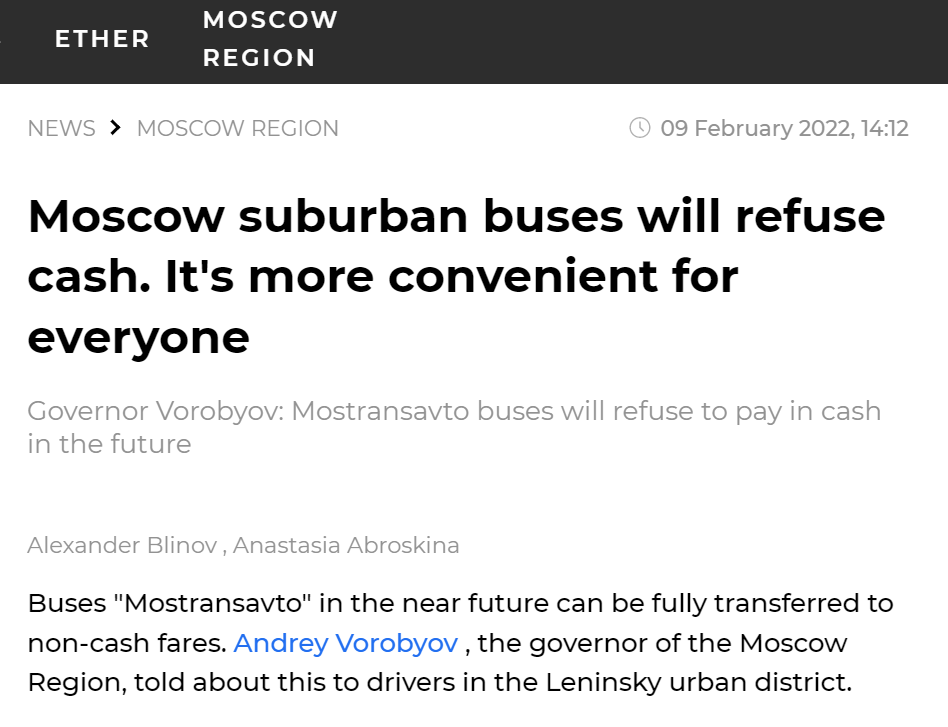Digital ruble starts test run as Russia moves away from cash
The pilot program for the Bank of Russia's scam-coin begins
Have you heard about Central Bank Digital Currency (CBDC)? These new digital tokens are like a normal central bank-issued currency—backed by the most valuable commodity, state violence—except now your money will be programmed to ensure you don’t buy too much toilet paper during the next lockdown. They really care about us.
The Bank of Russia is a big fan of this new fad and has already started test runs of its own CBDC, the digital ruble. The Incredulous 5D Russia Blogs promised us a gold-backed dollar-killer, but you can’t always get what you want…
So, what’s the status of the digital ruble? And why is the State Duma talking about the abolition of normal rubles? That makes us sweaty.

Twelve banks in Russia (Gazprombank, Sberbank, VTB, Rosbank and Promsvyazbank, Ak Bars Bank, ALFA-BANK, Tinkoff Bank, SKB-Bank, SOYUZ Bank, Transcapital Bank and DOM.RF Bank) are currently toying with this fancy new digital fiat.
As TASS reported last month:
The Bank of Russia provides for the phased development of the digital ruble platform, with a gradual expansion of the range of connected participants and types of available transactions. Based on the results of testing the platform prototype, a roadmap will be formed for the implementation of the digital ruble target platform. In December 2021, Olga Skorobogatova, First Deputy Governor of the Bank of Russia, announced that the prototype of the digital ruble platform was ready and piloting operations of the first stage with 12 banks would begin in January 2022. […]
As part of the first stage of testing, as envisaged by the draft of the main directions of digitalization of the financial market of the Russian Federation for the period 2022-2024, credit institutions will be connected and C2C operations (from consumer to consumer) will be implemented.
The second stage of testing involves the connection of the Federal Treasury and the implementation of the functionality of smart contracts, as well as consumer-to-business (С2B), business-to-business (B2B), business-to-government (B2G) transactions, and so on. In the future, financial intermediaries, financial infrastructure (exchanges, brokers, marketplaces, insurance companies, and others) will be connected, an offline mode will be introduced, and the digital ruble will be exchanged for foreign currency and the possibility of opening wallets for non-resident clients will be provided.
As Bank of Russia Deputy Governor Alexey Zabotkin noted during the World Economic Forum/SberBank “Cyber Polygon” event, the digital ruble could be used to “set limits on what types of purchases can be made”:
The Russian central bank authority said that parents could give the digital currency to their children with certain restrictions, such as blocking them from buying junk food.
“That would be a useful functionality for a customer, and of course you can come up with hundreds of other similar use cases,” Zabotkin added.
Yes, this amazing “functionality” will only be used to prevent pugnacious youngsters from buying too much Taco Bell. There is nothing to worry about.
Proponents of the digital ruble argue this new currency will be a convenient and cost-efficient way to carry out transactions; furthermore, the digital tokens would be more resistant to western sanctions or other economic shenanigans. Or so the argument goes.
Maybe. But the Bank of Russia is not ruling out the possibility of charging a commission for digital ruble transfers—which is rather scandalous.
As for convenience: the Russian government is reportedly aiming to issue pensions in digital rubles… but this seems a bit far-fetched:
The statement that Russians will be able to receive pensions in digital rubles also seems doubtful. Today, most pensioners in Russia do not even trust plastic cards or do not know how to use them, and it will be quite problematic to explain the technology of using an electronic wallet on a mobile phone.
Some other good questions, from the same article:
Will the introduction of the digital ruble turn the Central Bank into a monopoly? Secondly, how will the security of money circulation and the safety of money be ensured? Indeed, in a situation where every fourth crime in the country is committed using IT technologies, and the number of cyber fraud in the financial sector is steadily growing, the security of the national currency will cause serious concern. Thirdly, what will be the cost of implementing the project to create a digital ruble? […]
And most importantly, how to convince society that the introduction of a digital ruble is not an attempt by the authorities to create a “digital concentration camp”, where every purchase by citizens will become public knowledge?
Questions, questions…
While all of this is going on, the State Duma is expected this month to begin creating a roadmap for abandoning cash.
It would be an ambitious undertaking, especially since many people in Russia receive “unofficial” salaries. As one expert told News.ru:
It is no secret that millions of people today receive salaries and compensation for work performed unofficially though electronic transfers to their card. At the same time, the state has repeatedly announced through the mouths of various officials: it won’t last much longer, all money transfers will sooner or later be taken under control.
However, one must understand that the existence of a fairly wide sector of the shadow economy is an indicator of an unhealthy situation. People go into the gray zone not at all because they want to live not by the rules. It’s just that otherwise, the meager earnings of many will finally “dissolve.”
Meanwhile, the Moscow region is reportedly aiming to phase out the use of cash on buses:
As governor Andrey Vorobyov explained:
“[W]e are completely switching to cashless payments… For the future, you have to understand that we need to strive for zero cash payments in the Moscow region. I just want to ask you and all drivers to accept this,” the governor said.
Probably there are dozens of cities around the world that have already done this, but you know—it always starts with the “benign” cash bans.
And then one day you wake up and learn your digital rubles can only be used to purchase bug-dumplings and Herman Gref NFTs for your virtual “Meta” dacha.
“So it goes.”







I can’t even visualize all of the babushkas using digital rubles. My grandmother babushka wouldn’t. She’d trade cabbages or potatoes with another babushka.
Comrades do not listen to luddite naysayers like Slavsquat!
Embrace the technocratic future!
Digitial rubles do not have corona all over them like physical rubles!
Much healthier and safer for your climate change social credit passport!
No digital ruble, no pelmeni and wodka for you!
Later you will learn to appreciate the taste of bug powder en route to soylent green and children born not from wombs but lab vats!
Slaves-- uh-- Slavs, embrace your futures now: the digital ruble is here!
(All facetiousness aside, the digital ruble is merely the stepping stone for the IMF's crypto SDR one world currency.)